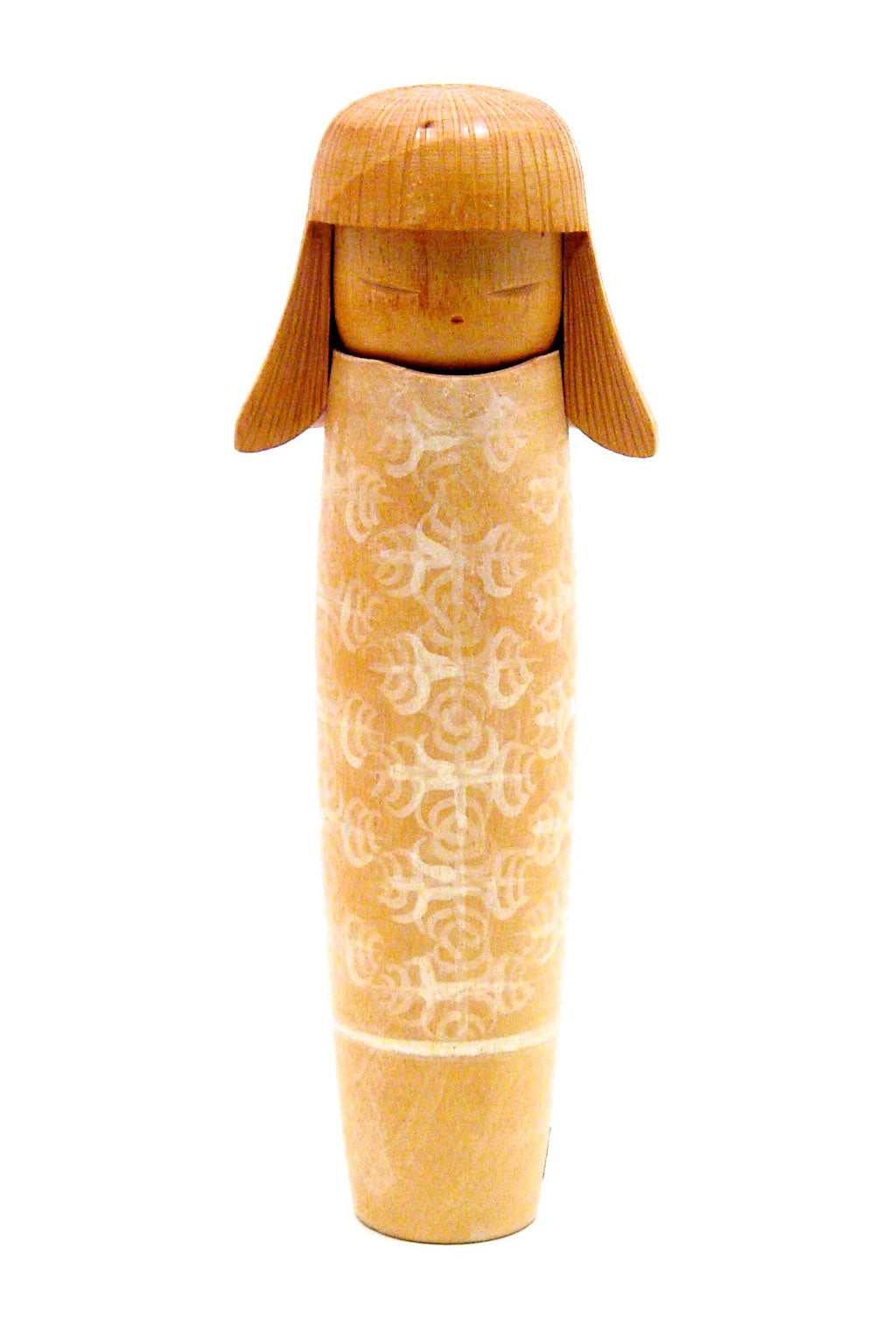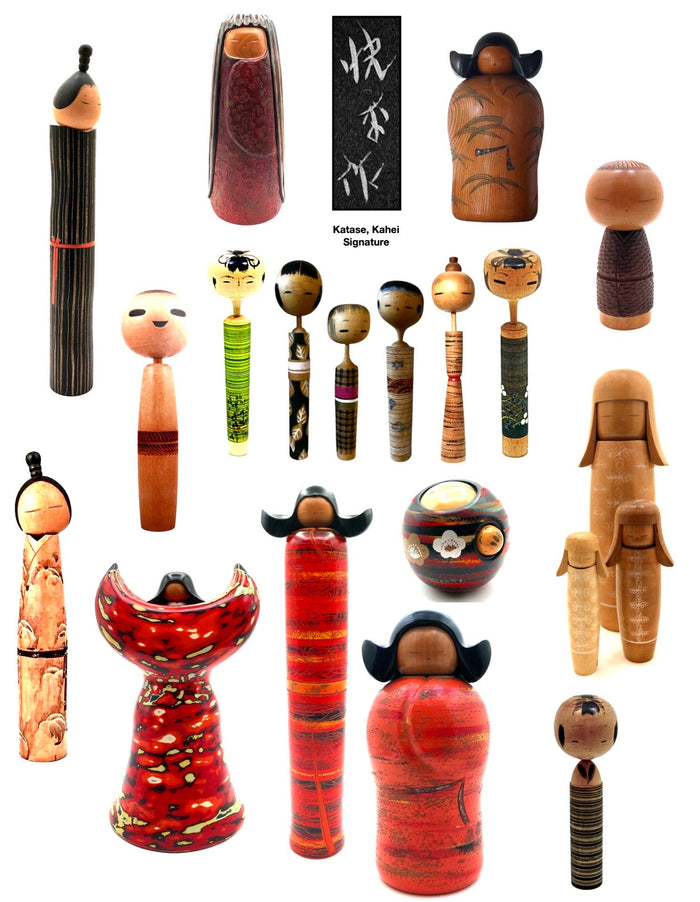
"Oboroya | Clouded Moon"
Dimensions: 7-0" h
This exceptionally large and detailed Kokeshi is exquisitely formed based on both traditional, and creative styling. The hair in particular takes on a traditional form and is delicately detailed in the carving technique. The motif that is positioned down the center front of the Kimono is executed in a silver lacquer, and indicates the artist’s fascination with this aesthetic. The doll has an incised artist stamp on the back bottom portion of the doll. This doll was published in an exhibition catalogue entitled: Kokeshi Dolls by JETRO, (the Japan External Trade Organization).
Vintage Condition: “as is” with some scattered light wear or stain that does not affect the design, and retains the original craft/workmanship. Any discoloration, chipping/cracking, surface wear or structural damage noted.

Artisan
Woodworker: Katase, Kahei
1922-2015
Biographical History:
Katase-san was born in Kanazawa prefecture in 1921 in a region known for its beautiful wooden marquetry crafts. Katase-san, the son of a Kijishi, (woodworker), began making creative Kokeshi in 1946. He won the first Prime Minister’s Award in 1954 at the ‘All Nippon Kokeshi Competition’. Along with many of his fellow Sosaku artists, Katase-san was a soldier and perhaps turned to creative Kokeshi-making to assuage the rigors of a long-fought war. Since 1962, he served as a judge at the Kokeshi Contest in Japan. In 1955, his work was dedicated to Her Majesty the Empress. In 1970 he was awarded the holder of Excellent Technique and was named a member of Meiko-Kai. He went to the United States in 1973 to direct the overseas exhibition in St Louis, where he was introduced through a television program at Missouri State. He was a member of the Cultural Properties Protection Committee of Hakone Town and a member of the Nippon Kokeshi Artistic Handicraft Association.
Collector's note – descriptive qualities, standard characteristics & ornamentation styles:
Many of his pieces are differently treated, with the natural contrasting head, and the natural grooved and stained body. He illustrates obi, inset into the doll with a hemp motif, (In early times, “asa” was an important source of cloth, and hemp leaves themselves formed the basis of a variety of hemp patterns). History tells us that the ‘God of Hemp’ is revered at Oasahiko Shrine in Tokushima. He additionally renders spring with cherry blossoms, wheat, trees, and stars to give character to his dolls. He seems to enjoy the rendering of long flowing unbound hair, (taregami) and details such as the inlay of silver motifs on the body.
And finally, it is unusual to see a doll made of three bulbous forms that compose the body and head, utilizing different woods to express the desired detail.
Katase focuses on what is known as “one-off” dolls turned from one piece of wood and detailed throughout the figural form. They primarily illustrate the “new” styles of Japan of the 18th century when the Dutch East Indies Trading Company influenced Japanese everyday life and customs. Katase-san is a master of lacquered color finishes incorporated with detailed carving of elements in the natural environment. Buddhist figures, which are intricately carved, are another style by this artist.
Explore & Learn More about Woodworker: Katase, Kahei